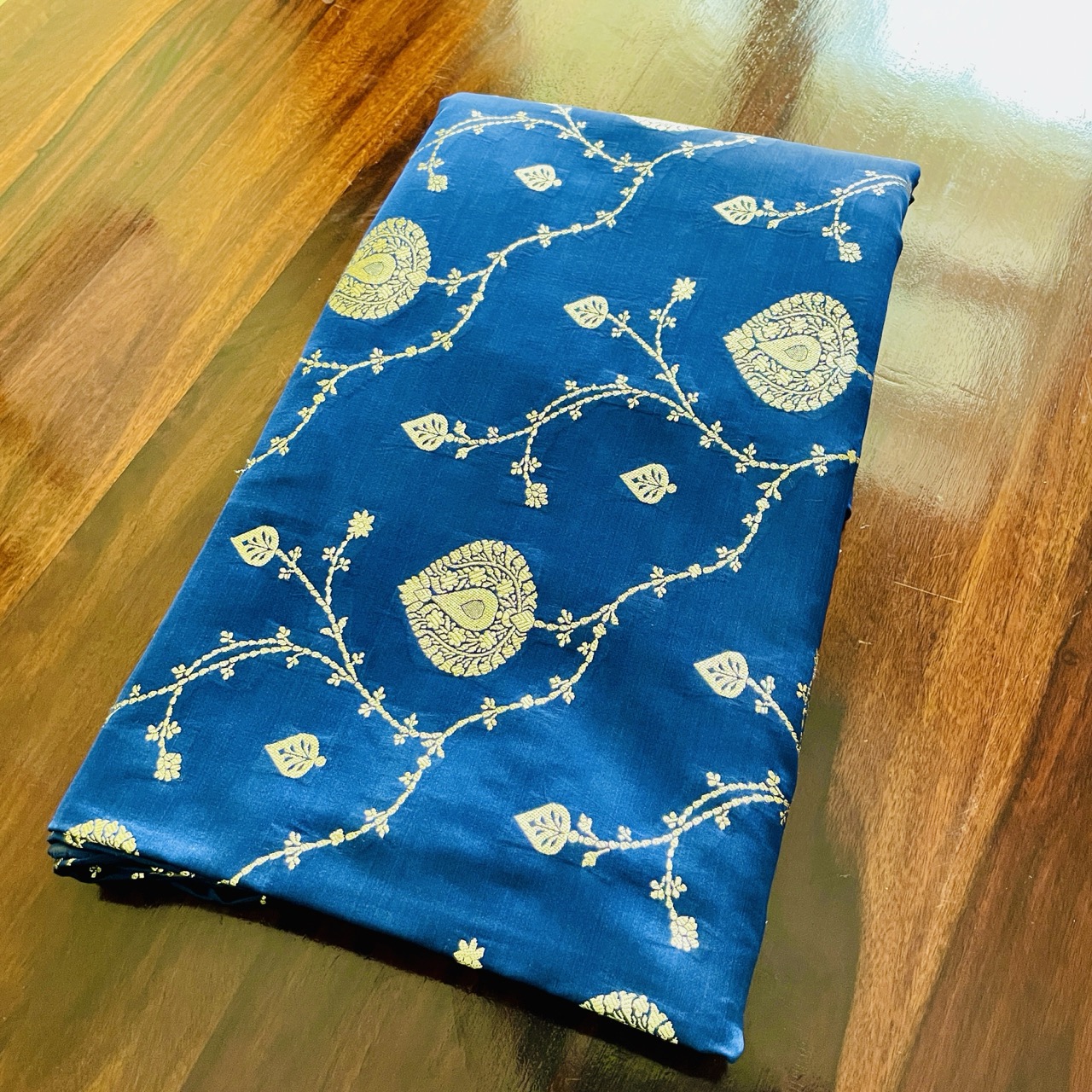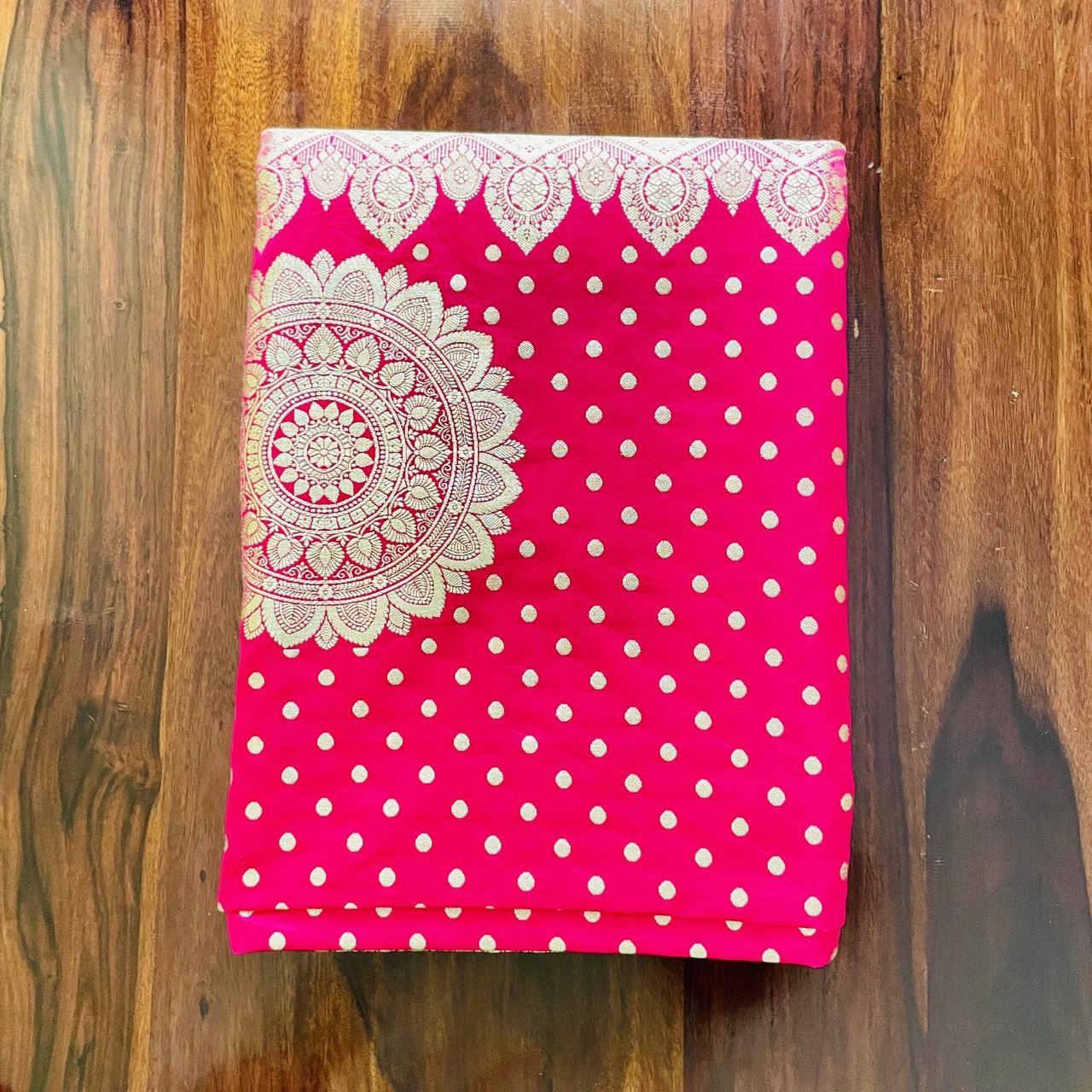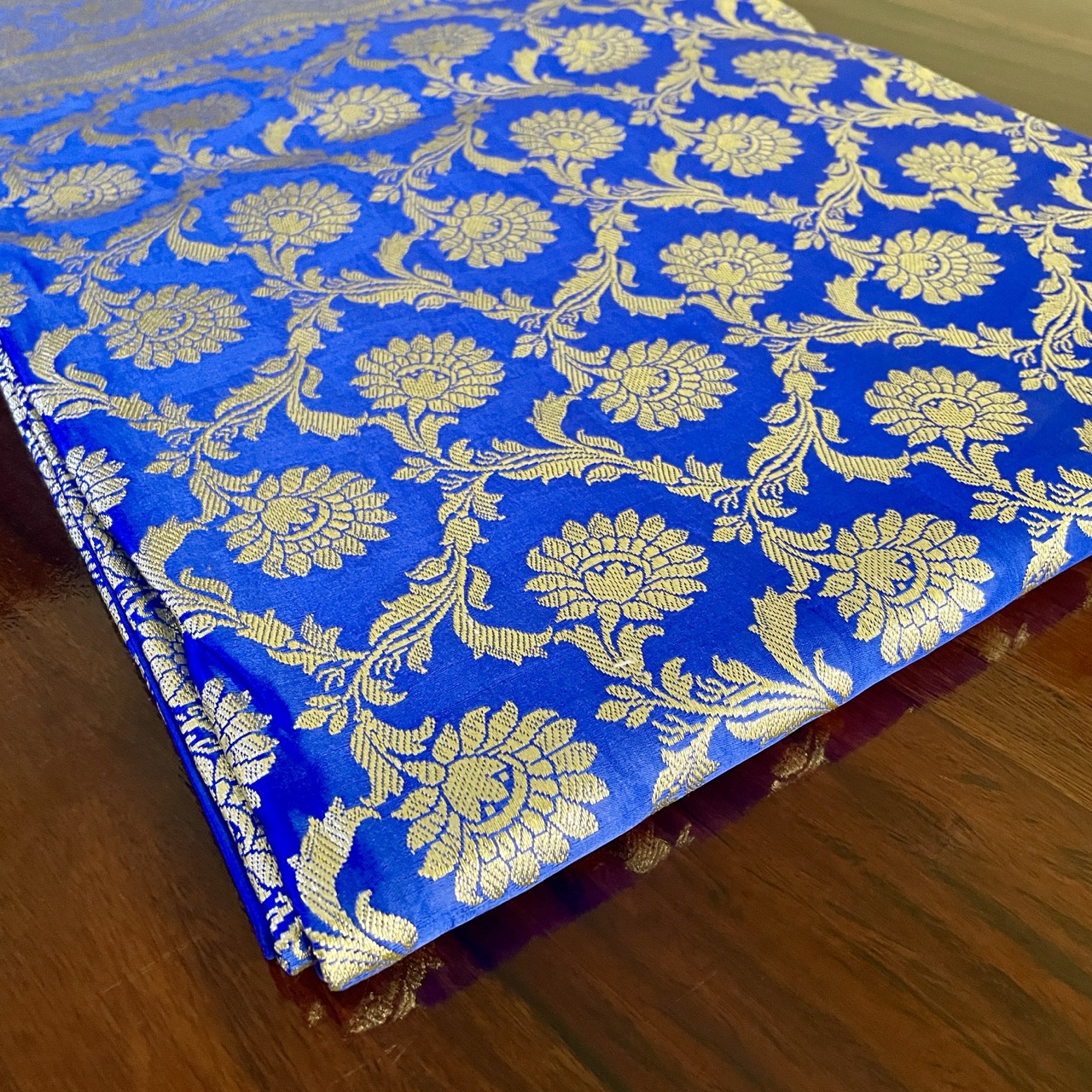When it comes to celebrating India’s rich spiritual and cultural traditions, few garments embody the essence of grace and heritage as much as Banarasi sarees. Known for its intricate craftsmanship, opulent gold thread weaving, and deep-rooted historical significance, the Banarasi saree is often the attire of choice for important poojas and religious ceremonies. Whether it’s a major festival, family gathering, or a spiritual ritual, wearing a Banarasi saree during such sacred occasions connects one to a lineage of tradition, elegance, and spirituality.
The Rich History and Spiritual Connection of Banarasi Sarees
Originating from Varanasi (also known as Kashi), these handwoven sarees are woven with stories of devotion, culture, and spirituality. Banarasi sarees are woven with the finest silk threads, often adorned with gold zari work, which symbolizes purity, wealth, and prosperity—attributes that are especially significant during religious occasions. The Kashi sarees tradition reflects the cultural wealth of Varanasi, often linked with temples and spiritual devotion.
Gold Thread Weaving: A Sacred Symbol of Purity and Blessings
One of the defining features of a Banarasi saree is its intricate gold zari weaving. This gold thread is not only a mark of the saree’s luxury and elegance, but it also carries profound symbolism in Hindu culture. The gold used in these sarees represents the energy of the sun, which is seen as a symbol of life, vitality, and purity in Indian traditions. During poojas, especially those for deities such as Lakshmi (the goddess of wealth) or Saraswati (the goddess of knowledge), the gold thread in the saree is believed to attract divine blessings, wealth, and wisdom.
Wearing a Banarasi saree with gold zari during pooja rituals is believed to spiritually purify the wearer and create a connection to the divine. This symbolism is particularly profound during major festivals and auspicious occasions like Diwali, Karwa Chauth, and Laxmi Puja, where gold is considered a harbinger of good fortune.
Colors and Their Connection to Deities and Rituals
In Banarasi sarees, color plays a significant role in aligning the saree with the energy of specific deities and rituals. Certain colors are chosen based on their auspicious meanings, invoking blessings and protection during poojas and religious events:
Red: Often worn during weddings and Laxmi Puja, red Banarasi sarees symbolize love, fertility, and prosperity. Red, being a vibrant color, is believed to attract positive energy and ward off negative forces. Brides often choose red Banarasi sarees for their wedding day, as the color is synonymous with marital bliss and divine blessings.
Yellow: This color is highly revered during festivals like Baisakhi, Makar Sankranti, and Navratri, where it symbolizes knowledge, wisdom, and purity. A yellow Banarasi saree with its golden embroidery is a perfect choice for spiritual gatherings and pooja ceremonies, especially when praying to deities like Saraswati.
Green: Green, often associated with new beginnings and fertility, is another color worn during poojas to invoke prosperity and growth. A green Banarasi saree is a lovely choice for Ganga Puja or other sacred rituals, representing harmony and peace.
White: Symbolizing purity, white Banarasi sarees are worn during Shivaratri or rituals honoring Lord Shiva. The serene and peaceful hue signifies cleanliness and simplicity, making it ideal for meditation, prayer, and spiritual practices.
Gold and Silver: Gold and silver are revered in Hindu traditions for their association with wealth and divine radiance. Banarasi sarees with silver or gold zari work are ideal for Laxmi Puja or other festivals where wealth, prosperity, and divine blessings are invoked.
Why Banarasi Sarees Are the Perfect Attire for Religious Gatherings
A Banarasi saree is not just a garment; it’s a reflection of India’s deeply rooted cultural heritage, spiritual devotion, and respect for tradition. Whether worn during religious poojas or as part of festive celebrations, these sarees carry an aura of reverence and piety. The fine silk fabric, combined with its majestic gold and silver thread weaving, makes the Banarasi saree the perfect attire for religious gatherings where the wearer wants to look elegant while connecting spiritually to the event.
For example, during the Laxmi Puja, a woman may choose to wear a pure silk saree with golden zari work, invoking the goddess’s blessings of wealth and prosperity. Similarly, for Diwali or Karwa Chauth, the saree’s luxurious feel and the divine association of gold thread help create an aura of positivity and divine energy.
Conclusion
In Hindu culture, wearing a Banarasi saree during religious occasions is not just about style; it’s about embracing and honoring traditions that have stood the test of time. The gold zari, intricate weaves, and auspicious colors of the saree play a significant role in enhancing the spiritual experience, making it an essential garment for poojas, festivals, and religious gatherings. Whether it’s a simple Laxmi Puja or a grand wedding celebration, a Banarasi saree is more than just a piece of clothing—it’s a symbol of faith, blessings, and the timeless beauty of Indian heritage.
So, when you shop for Kashi sarees online or explore the world of Banarasi sarees, remember that you are investing in more than just fabric; you’re embracing a living tradition that connects you to generations of spiritual elegance and cultural reverence.



















